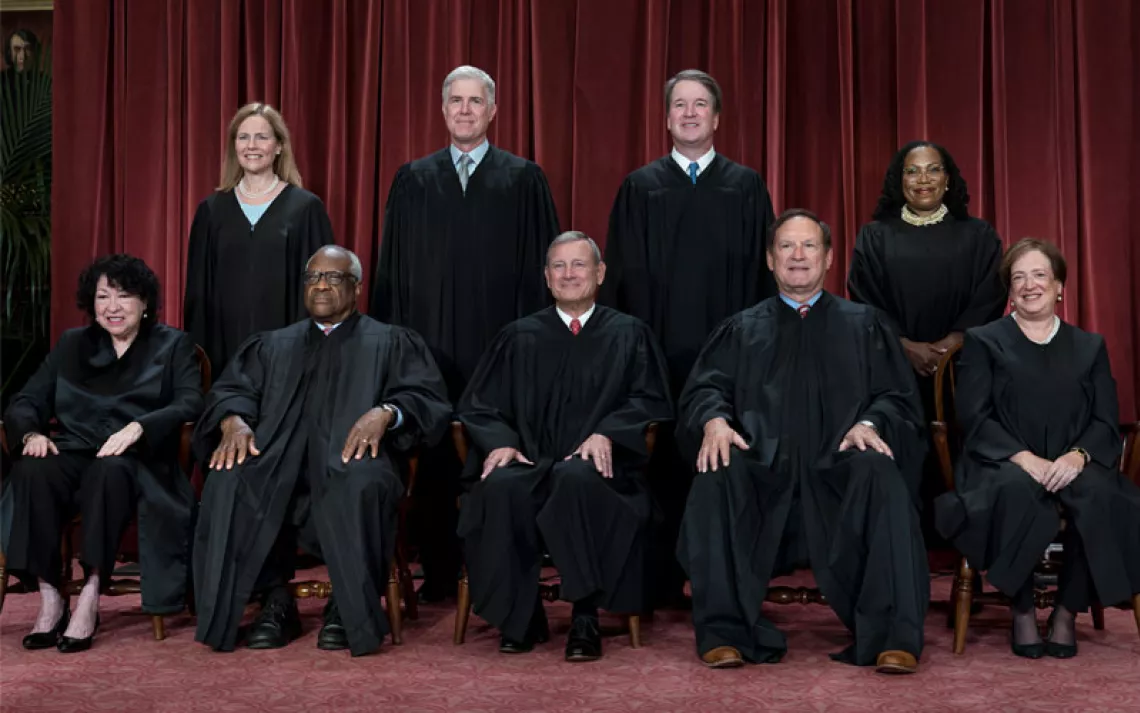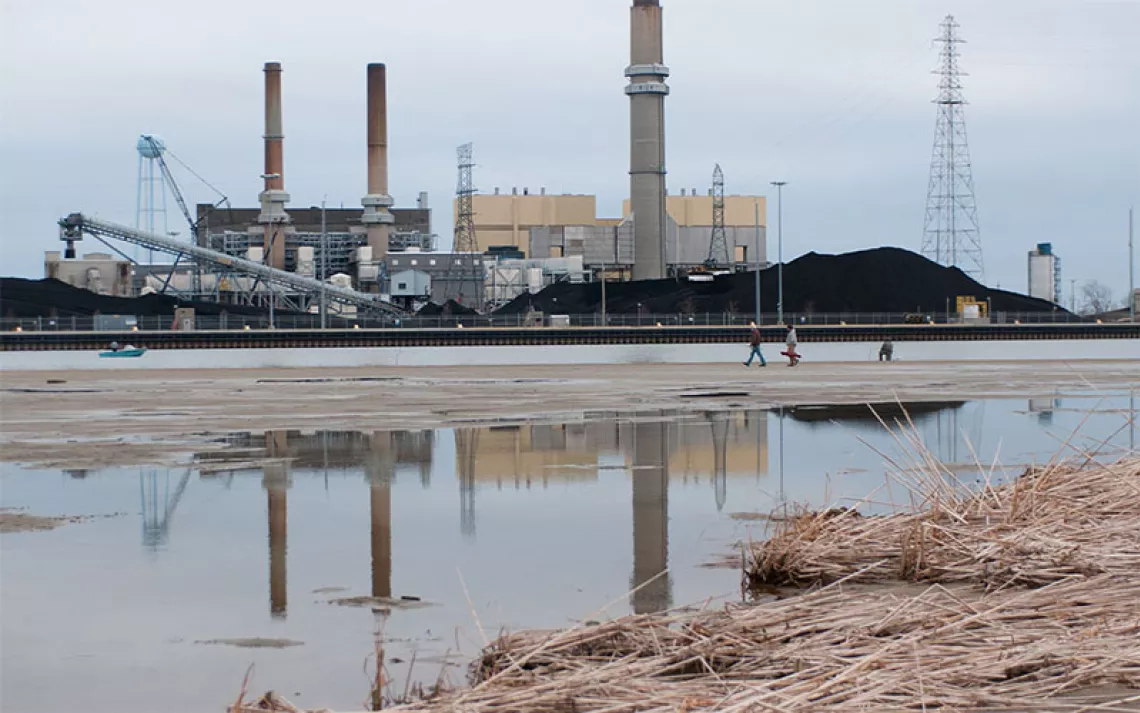EPA’s Asbestos Policy Is Toxic
New policies place chemical companies above American health

Photo by Francesco Scatena
Asbestos is one of the most dangerous chemicals in modern industry. Still, contrary to a common misperception, the toxic material, while largely phased out, has never been banned. The EPA during the Obama administration tried to remedy that; the agency, under President Trump, is trying hard not to, potentially putting thousands of lives at risk. Under the leadership of acting administrator Andrew Wheeler, the EPA recently punted on the opportunity to ban asbestos, which is believed to kill up to 15,000 Americans a year due to its host of health risks.
The development arrives after a years-long fight to finally ban the toxic material for good. In 2016, the Obama administration revised and updated the Toxic Substances Control Act, the nation’s main chemical regulation law. The revised TSCA, also called the Frank R Lautenburg Chemical Safety for the 21st Century Act, was designed to remove roadblocks that had historically prevented the EPA from banning certain chemicals, even when they were known toxins. It declared that chemicals had to be reviewed only on the basis of their risks to health, not considering costs, and included protections for vulnerable populations.
Among other directives,the updated law charged the EPA with reviewing several chemicals common in American households, many of which were largely unstudied. Asbestos was one of the first 10 chosen for review. When it passed, the EPA called the revised law “a milestone to protect our health.”
President Obama pointed to the revised law as a historic moment in American regulatory history, saying, “For the first time in 20 years, we are updating a national environmental statute. For the first time in our history, we’ll actually be able to regulate chemicals effectively. And we’re doing it in the same, overwhelmingly bipartisan fashion as happened with those pillars of legislation to protect our air, and our water, and our wildlife—the initiatives where Democrats and Republicans first came together to pass laws more than four decades ago.”
The law gave environmentalists and public health officials hope that asbestos would be banned. Most uses of asbestos are legal in the United States, unlike in most other developed nations. Sixty countries have banned asbestos, but the U.S. and Canada are not among them.
Under Trump, the EPA has failed to ban asbestos, despite conclusive evidence of its health risks. The agency announced in June that it will not review any “legacy uses” of asbestos and other dangerous chemicals or investigate exposure to them from air or water. “Legacy uses” are uses that are no longer ongoing, although they are still in buildings. But, legacy uses and indirect exposure are how most Americans come into contact with asbestos, whether it is in their homes, schools, or even their cosmetics.
“This is uncharted territory,” said Environmental Working Group (EWG) legislative attorney Melanie Benesh. “The Obama administration really only had six months to implement the changes to this law, but things were going in a very different direction than they are under this administration. It is certainly a much cozier relationship to the chemical industry than we have seen,” she added.
In addition to ignoring the TSCA’s regulatory directives, the EPA announced in June a "significant new use rule" (SNUR) on asbestos, which has environmentalists and scientists worried that the chemical isn’t being regulated well enough to protect Americans. The SNUR was passed over the objections of EPA staff members who tried to stop it. Asbestos has been a key issue for many veteran staffers, some of whom told The New York Times that they had “significant concerns” about the new policies in place.
The SNUR, which was open for public comment until mid-August, requires manufacturers to notify the EPA if they are bringing one of 15 asbestos uses back into their production. It is nowhere near the full ban that environmentalists have been fighting for. Benesh was clear that the SNUR was not a clear success for chemical regulation advocates. “It is more restrictive than what currently exists. But the real issue here is that currently, there are no regulations. There are very few uses of asbestos that are not legal,” said Benesh.
There are numerous public health risks to leaving asbestos unregulated. It is a long-established carcinogen. Exposure to the substance has high correlations with development of lung cancer and is the main cause of mesothelioma, a very rare cancer that appears in membranes that cover lungs and other internal organs, as well as scarring of the lung tissue due to breathing in asbestos fibers, known as asbestosis. It has also been linked to larynx and ovarian cancers. Industrial workers are especially at risk, but anyone can have health impacts from asbestos. It is particularly dangerous for people who live in older buildings, where the material is often in their walls.
Many people think of asbestos as a long-phased-out material, but it still surrounds us, even if it was put in place decades before. “It is still pretty pervasive in our environment, and it still causes the same health risks whether it was manufactured yesterday or manufactured 40 years ago,” said Benesh.
When the TSCA was first passed in 1976, it had significant loopholes that prevented the EPA from regulating certain dangerous chemicals beginning to surround concerned Americans. Among other issues, it required the EPA to find exposure risks in order to insist companies test their chemicals, a bizarre catch-22 that left the agency without any real authority over the powerful chemical lobby. About 62,000 chemicals were “grandfathered in” when the law was passed, and the EPA had little ability to review them. The TSCA focused almost entirely on new chemicals. Of the 85,000 chemicals on the U.S. market, the EPA had been successful in reviewing only 200 as of 2016.
The EPA did try to ban asbestos in 1989, but the law was overturned by the Fifth Circuit Court of Appeals.
The 2016 TSCA overhaul, Benesh explained, was designed to pave the way for the abolishment of toxic chemicals. “This is really supposed to be the EPA’s opportunity to do what it wasn’t able to do in 1989 and just ban asbestos,” said Benesh.
So who stands to benefit from the administration’s harmful new policy? Chemical companies for one. Benesh is part of a team at EWG that has filed a FOIA request to investigate former EPA director Scott Pruitt’s ties to the chemical industry and how they might have influenced the decision, and Earthjustice is suing Trump to halt the administration’s chemical policies, claiming that the EPA is not adhering to the TSCA and that upper-level staff members have conflicts of interest interfering with their decisions. Pruitt hired Nancy Beck, who was a chemical industry lobbyist, to work in a chemical safety position at the agency, allowing her to regulate her own industry.
The new policy also happens to be good news for Russia, now the world’s largest asbestos producer. Most asbestos used in the U.S. was, until recently, imported from Brazil, but asbestos was banned there this year, leaving Russia the main supplier to the United States. The new rules have brought praise from Russia, even leading one company to print bags of asbestos with the president’s face, with the caption “Approved by Donald Trump” in Russian. The company, Uralasbest, reportedly has close ties to Russian president Vladimir Putin, according to the Center for Public Integrity.
Uralasbest, in the appropriately named Asbest, Russia, runs a massive mine that is seven miles long, about the length of the city of San Francisco. The company told the International Consortium of Investigative Journalists in an interview in Russia in 2010 that, “The only way to remove our cheap and widely available product is to ban it.”
 The Magazine of The Sierra Club
The Magazine of The Sierra Club



